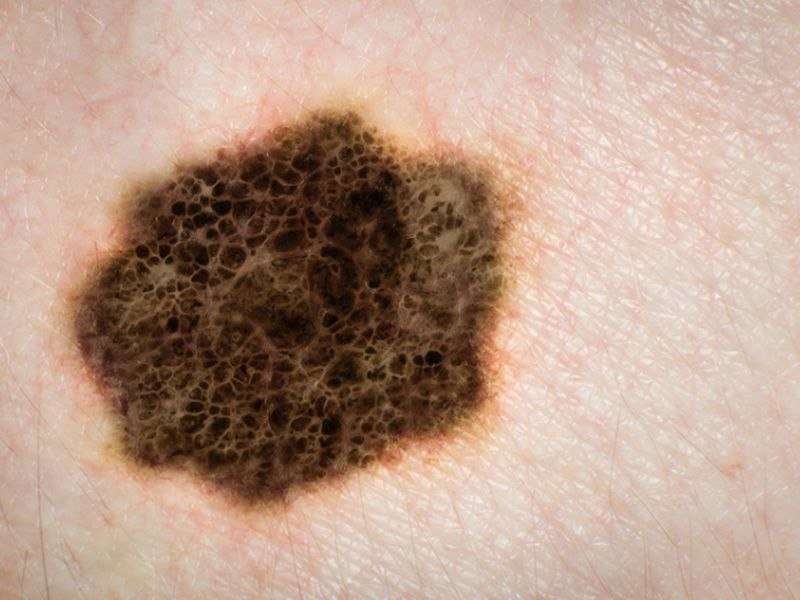(HealthDay)—The American Joint Committee on Cancer (AJCC) melanoma staging system has been revised, according to a report published online Oct. 13 in CA: A Cancer Journal for Clinicians.
Jeffrey E. Gershenwald, M.D., from the University of Texas MD Anderson Cancer Center in Houston, and colleagues from the AJCC Melanoma Expert Panel assembled a large database of >46,000 patients from 10 centers worldwide with stages I, II, and III melanoma diagnosed since 1998. Changes in the eighth edition Cancer Staging Manual were based upon analysis of this database.
Key changes include recording tumor thickness measurements to the nearest 0.1 mm; new definitions of T1a and T1b (T1a, <0.8 mm without ulceration; T1b, 0.8 to 1 mm with or without ulceration or <0.8 mm with ulceration); revision of pathological (but not clinical) stage IA to include T1b N0 M0; N category descriptors "microscopic" and "macroscopic" for regional node metastasis are redefined as "clinically occult" and "clinically apparent"; prognostic stage III groupings are based on N category criteria and T category criteria and increased from three to four subgroups (stages IIIA-IIID); N subcategory definitions are revised, with the presence of microsatellites, satellites, or in-transit metastases now categorized as N1c, N2c, or N3c based on the number of tumor-involved regional lymph nodes, if any; additional descriptors for each M1 subcategory designation for lactate dehydrogenase; and a new M1d designation for central nervous system metastases.
"This evidence-based revision of the AJCC melanoma staging system will guide patient treatment, provide better prognostic estimates, and refine stratification of patients entering clinical trials," conclude the authors.
Several authors disclosed financial ties to the pharmaceutical industry.
More information: Abstract/Full Text
Copyright © 2017 HealthDay. All rights reserved.




















